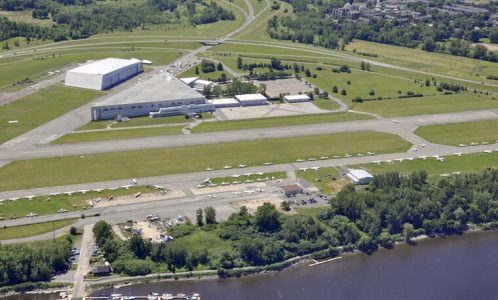FAA’s Updated AC for Non-Towered Flight Operations
Navigating uncontrolled airports presents unique challenges for pilots. Effective communication between pilots in the air and on the ground is vital for safe takeoffs, landings, and taxiing. The FAA’s updated Advisory Circular (AC), 90-66C, “Non-Towered Flight Operations”, discusses regulatory requirements, recommended operations, and communication procedures at uncontrolled airports. The AC emphasizes important topics like traffic patterns, phraseology, and operational procedures.
In addition, the AC directs pilots to other essential resources such as chart supplements, the AIM, and airport remarks for precise procedures. It even provides examples of what not to say on the radio, helping pilots communicate effectively.
If you fly into uncontrolled airports, familiarize yourself with these updated FAA procedures. It’s not just about following the rules but also about preventing mid-air collisions and near-misses. Prioritizing a thorough understanding of the system is the key to maintaining safety.
Safety at Uncontrolled Airports
Effective communication is vital for pilots at uncontrolled airports. Statistics reveal that miscommunication is the leading cause of accidents at uncontrolled airports. These accidents can be prevented if pilots know and diligently follow radio protocol procedures. Pilots must use proper phraseology, avoid jargon, and speak clearly and concisely.
To enhance communication skills in the air, focus on clarifying communication, actively listening, making informed decisions, and exercising judgment. Repeat instructions to ensure accurate reception and understanding. Additionally, carefully listen to other pilots’ transmissions and adjust their actions considering weather and air traffic changes.
Pilots can also follow steps to ensure they are adequately prepared for flights to and from uncontrolled airports before takeoff, such as:
- Check Weather Conditions: Check weather conditions at the airport and along their route before taking off or landing. This includes checking for visibility, wind, cloud cover, and precipitation.
- Consider Terrain: Consider the terrain around the airport, including any obstacles, such as hills or buildings that could affect the approach or departure path.
- Determine Runway Length: The runway length is another critical factor to consider. Ensure you have enough runway length to take off and land safely, especially in high-density altitude situations.
- Perform Pre-Flight Checks: Before taking off or landing, perform pre-flight checks to ensure the aircraft is in good condition. This includes checking the fuel level, oil level, tire pressure, and other essential elements.
- Follow Checklists: Before and after takeoff and landing, follow checklists to ensure you don’t miss any critical steps. These checklists include confirmation of airport runway alignment and identification of any obstacles.
- Communicate with the Airport and Other Pilots: Communicate with the airport and other pilots to ensure safety. This includes announcing your intentions and listening to other pilots’ announcements.
- Be Mindful of Traffic Patterns: Take note of the airport traffic patterns, including entering and exiting flight paths, to prevent collisions.
Effective communication and reviewing and following the updated AC from the FAA are critical when flying to and from uncontrolled airports. Pilots must be aware of the essential factors at these airports and use proper phraseology, clarify communication, actively listen, and make informed decisions and judgment calls to ensure safety. By doing so, accidents can be avoided, and airspace safety maximized.
RELATED READING
RELATED CTS TRAINING










